It's always a bit of a debate where to head for at the weekend. There's the coast with the fulmars and oystercatchers; or the valley with its wide array of birds; and the downs more generally with sheep and cattle. Today, we headed for the valley where the skylarks were abundant, singing loudly as they played out their distinctive vertical flight and hover. It's a great location for them (they like to nestle in the long grass) and if you can spot them on the wing (tiny dots high in the sky) and listen closely, you can time their descent by their song. Basically they run out of puff! Or that's how it appears to me. The singing gets stretched, weakens, and they then slowly descend back to earth. Listening closely allows you time to get near the landing spot. 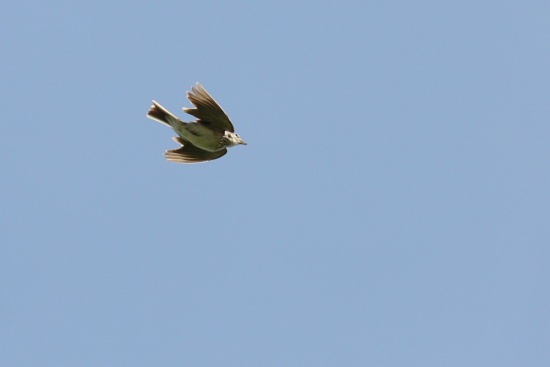 Skylark on the wing
Skylark on the wing
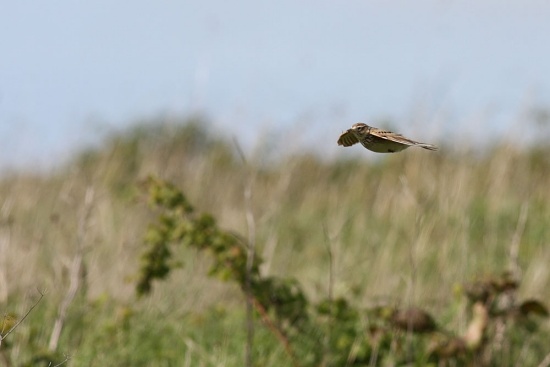 Skylark landing
Skylark landing
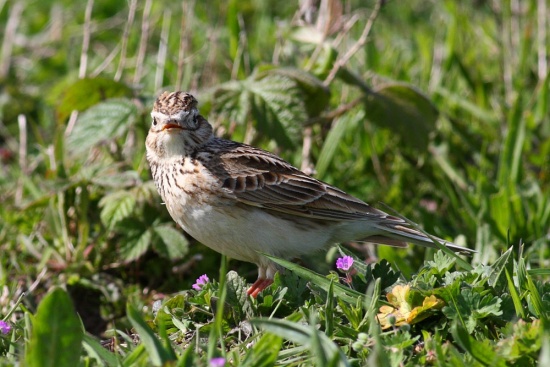 Skylark preparing to take off again
Skylark preparing to take off again
There were many other birds around, including linnets, starlings, whitethroats and blackcaps, wheatears, and crows and magpies. The kestrels were about, but not near enough to worry the camera.
There were plenty of rabbits though. Most were in typical poses, sunning themselves and then running for cover… This is the way I like to see them.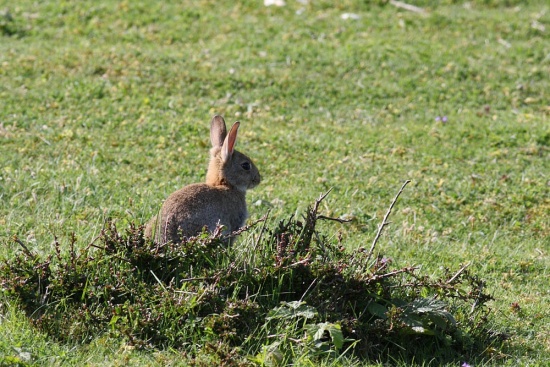 Rabbit
Rabbit
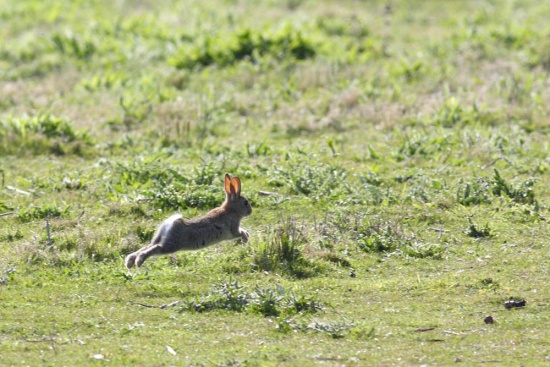 Run rabbit… run
Run rabbit… run
Unfortunately as well as the numerous young bunnies, there were a number of rabbit corpses around and evidence that we have another outbreak of myxomatosis. While most of the local population seemed unaffected, there were more than a few rabbits showing the distinctive and distressing signs of disease. I took some photos but I don't feel that I want to post them here. I'll make do with one of the more natural outcomes (and it's a more distant shot), since it's the first time I've seen a carrion crow actually demonstrating how it got its name.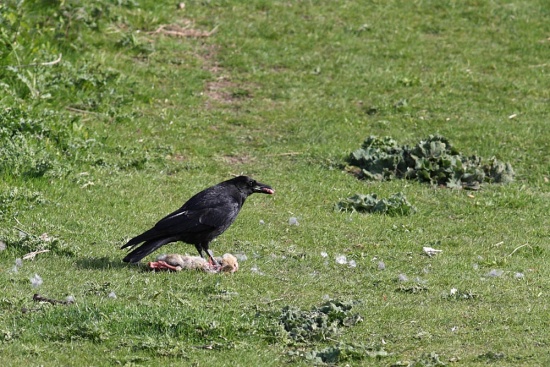 Carrion crow with rabbit corpse
Carrion crow with rabbit corpse
And if disease doesn't make life hard enough for the rabbits, there's always the risk of predators. This next series of shots was taken over a period of 9 seconds. We were in a quiet part of the valley when a male fox poked his head out of the thick undergrowth. He stared, and then turned slightly…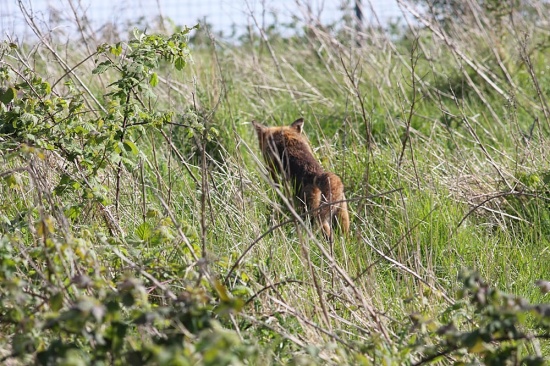
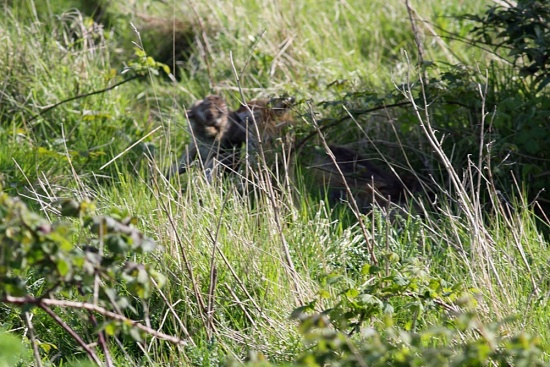
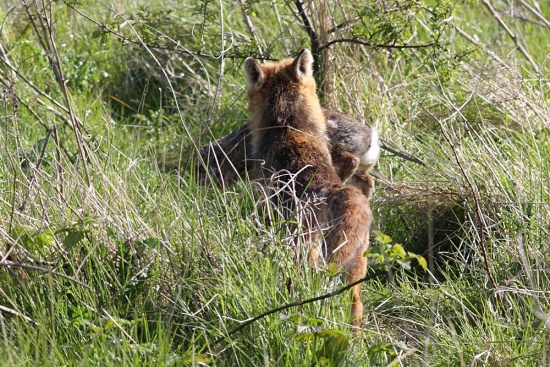
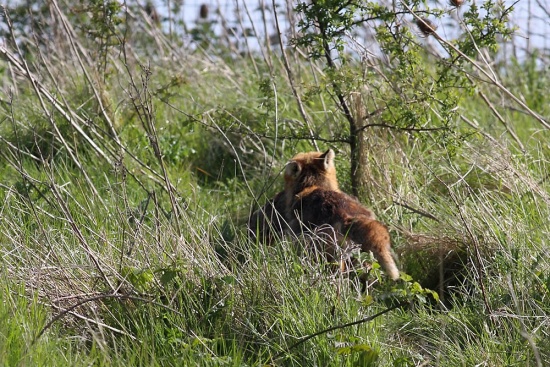
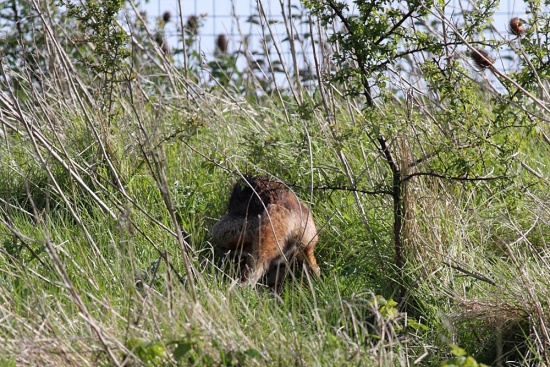

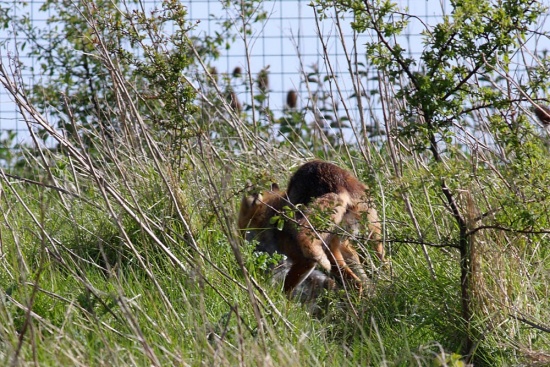

And then he was gone… It was quick (very quick). Much quicker than when I came across a stoat doing much the same a year or so ago. The time from the the second to the final shot is just two seconds.
Camera note: all shots taken with the EF 400mm f/5.6L USM lens. I used a Manfrotto 685B Neotec monopod and 234RC tilt head for all of them, with the exception of the flight shot.
SittingFox
2 May 2009Hm, we had a myxi outbreak here last year, though I haven't seen a case so far this spring. Horrible disease.
Wonderful shots of the skylark :up: and interesting to see the hunting fox. They certainly do catch rabbits quickly – when I saw a fox do the same thing a while back, it was over in the blink of an eye.
Words
2 May 2009Myxi is so vile. One of the worst forms of agricultural/pest control we've managed to create. I feel really sorry for the rabbits.
The skylark was wonderfully bold, but the fox was the obvious highlight despite the brevity of the encounter and the unforgiving long grass and branches.
gdare
3 May 2009I`ve never heard for myxomatosis before. I Googled it and found an article in Wikipedia. In Australia people used this on purpose, to reduce number of rabbits and in two years their population reduced from 600 million to 100 million, killing every infected rabbit in about 4 days :faint:
Words
3 May 2009Darko, yes it's a disease that was introduced deliberately to control rabbits, and has now become a real blight. It's very nasty indeed and shocking to see. A decent fox and raptor population would help keep the numbers down, and it is possible to create rabbit-proof fencing around crop fields. Not cheap, but possible. I've put up a picture of a rabbit with moderate signs. It gets worse. Not pleasant at all.
Words
3 May 2009No it doesn't spread to other species. The main problem for raptors is that it can wipe out their food source. There's been quite a lot of research on this in Spain.
gdare
3 May 2009Argh, that looks nasty. Is it spreading over the raptors if they eat ill rabbit?
Sometimes I think there are no limits to stupidity of people :furious:
gdare
3 May 2009Poor wolves :awww:
:bomb:
SittingFox
3 May 2009Yes, introduced rabbit diseases are playing ecological havoc in Spain – with highly endangered Iberian lynx as well as rare birds of prey. But once a disease has got a foothold, it's very difficult to remove. Mange was deliberately introduced to North American wolves many decades ago, and is still found all over the continent, even though official policies to wolves have (slightly) improved.
The Australian government has actively considered introducing diseases into the fox population as well 🙁 Needless to say, the most damaging introduced species of all in Australia – sheep – are viewed in a completely different light…
Flying Red Fox Blog
5 May 2009Nice photos 🙂 shame about the Rabbits poor things, i have noticed less of them around on the train from Bognor to Gatwick though. Hope the Foxes dont catch it off the dead rabbits they catch.
It was an ok Bank Holiday weekend, the sunniest was Saturday at Gatwick 😀 but hazy on Sunday and turned cold yesterday! Hotham Park had its restoration celebration yesterday and that was fun, when i get time i will post them, got to go to work now though! 😀
anonymous
6 Oct 2009Jennifer writes:
Hi there,
I would like to use one of your photos on an album cover. I'm a self-producing musician. Would you contact me? robotdog5@hotmail.com
Thank you,
Jennifer